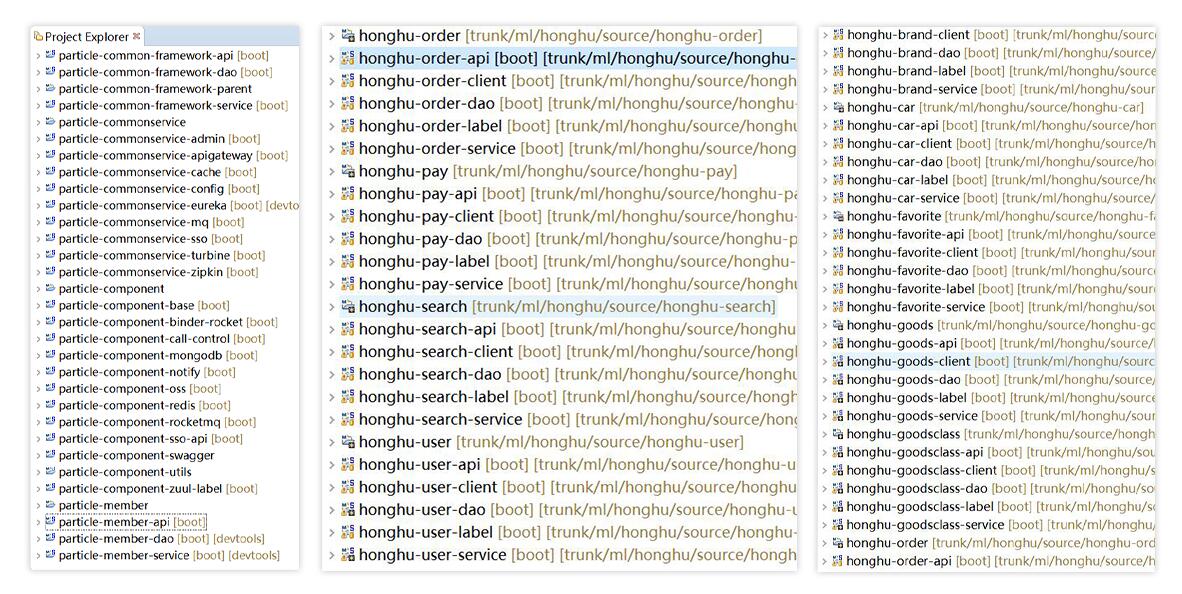使用Redis
Redis是一个开源的使用ANSI C语言编写、支持网络、可基于内存亦可持久化的日志型、Key-Value数据库。
引入依赖
Spring Boot提供的数据访问框架Spring Data Redis基于Jedis。可以通过引入spring-boot-starter-redis来配置依赖关系。
<dependency>
<groupId>org.springframework.boot</groupId>
<artifactId>spring-boot-starter-redis</artifactId>
</dependency>
参数配置
按照惯例在application.properties中加入Redis服务端的相关配置,具体说明如下:
# REDIS (RedisProperties) # Redis数据库索引(默认为0) spring.redis.database=0 # Redis服务器地址 spring.redis.host=localhost # Redis服务器连接端口 spring.redis.port=6379 # Redis服务器连接密码(默认为空) spring.redis.password= # 连接池最大连接数(使用负值表示没有限制) spring.redis.pool.max-active=8 # 连接池最大阻塞等待时间(使用负值表示没有限制) spring.redis.pool.max-wait=-1 # 连接池中的最大空闲连接 spring.redis.pool.max-idle=8 # 连接池中的最小空闲连接 spring.redis.pool.min-idle=0 # 连接超时时间(毫秒) spring.redis.timeout=0
其中spring.redis.database的配置通常使用0即可,Redis在配置的时候可以设置数据库数量,默认为16,可以理解为数据库的schema
测试访问
通过编写测试用例,举例说明如何访问Redis。
@RunWith(SpringJUnit4ClassRunner.class)
@SpringApplicationConfiguration(Application.class)
public class ApplicationTests {
@Autowired
private StringRedisTemplate stringRedisTemplate;
@Test
public void test() throws Exception {
// 保存字符串
stringRedisTemplate.opsForValue().set("aaa", "111");
Assert.assertEquals("111", stringRedisTemplate.opsForValue().get("aaa"));
}
}
通过上面这段极为简单的测试案例演示了如何通过自动配置的StringRedisTemplate对象进行Redis的读写操作,该对象从命名中就可注意到支持的是String类型。如果有使用过spring-data-redis的开发者一定熟悉RedisTemplate<K, V>接口,StringRedisTemplate就相当于RedisTemplate<String, String>的实现。
除了String类型,实战中我们还经常会在Redis中存储对象,这时候我们就会想是否可以使用类似RedisTemplate<String, User>来初始化并进行操作。但是Spring Boot并不支持直接使用,需要我们自己实现RedisSerializer<T>接口来对传入对象进行序列化和反序列化,下面我们通过一个实例来完成对象的读写操作。
- 创建要存储的对象:User
public class User implements Serializable { private static final long serialVersionUID = -1L; private String username; private Integer age; public User(String username, Integer age) { this.username = username; this.age = age; } // 省略getter和setter } - 实现对象的序列化接口
public class RedisObjectSerializer implements RedisSerializer<Object> { private Converter<Object, byte[]> serializer = new SerializingConverter(); private Converter<byte[], Object> deserializer = new DeserializingConverter(); static final byte[] EMPTY_ARRAY = new byte[0]; public Object deserialize(byte[] bytes) { if (isEmpty(bytes)) { return null; } try { return deserializer.convert(bytes); } catch (Exception ex) { throw new SerializationException("Cannot deserialize", ex); } } public byte[] serialize(Object object) { if (object == null) { return EMPTY_ARRAY; } try { return serializer.convert(object); } catch (Exception ex) { return EMPTY_ARRAY; } } private boolean isEmpty(byte[] data) { return (data == null || data.length == 0); } } - 配置针对User的RedisTemplate实例
@Configuration public class RedisConfig { @Bean JedisConnectionFactory jedisConnectionFactory() { return new JedisConnectionFactory(); } @Bean public RedisTemplate<String, User> redisTemplate(RedisConnectionFactory factory) { RedisTemplate<String, User> template = new RedisTemplate<String, User>(); template.setConnectionFactory(jedisConnectionFactory()); template.setKeySerializer(new StringRedisSerializer()); template.setValueSerializer(new RedisObjectSerializer()); return template; } } - 完成了配置工作后,编写测试用例实验效果
@RunWith(SpringJUnit4ClassRunner.class) @SpringApplicationConfiguration(Application.class) public class ApplicationTests { @Autowired private RedisTemplate<String, User> redisTemplate; @Test public void test() throws Exception { // 保存对象 User user = new User("超人", 20); redisTemplate.opsForValue().set(user.getUsername(), user); user = new User("蝙蝠侠", 30); redisTemplate.opsForValue().set(user.getUsername(), user); user = new User("蜘蛛侠", 40); redisTemplate.opsForValue().set(user.getUsername(), user); Assert.assertEquals(20, redisTemplate.opsForValue().get("超人").getAge().longValue()); Assert.assertEquals(30, redisTemplate.opsForValue().get("蝙蝠侠").getAge().longValue()); Assert.assertEquals(40, redisTemplate.opsForValue().get("蜘蛛侠").getAge().longValue()); } }
源码来源
-
当然spring-data-redis中提供的数据操作远不止这些,本文仅作为在Spring Boot中使用redis时的配置参考,更多对于redis的操作使用,请参考Spring-data-redis Reference。